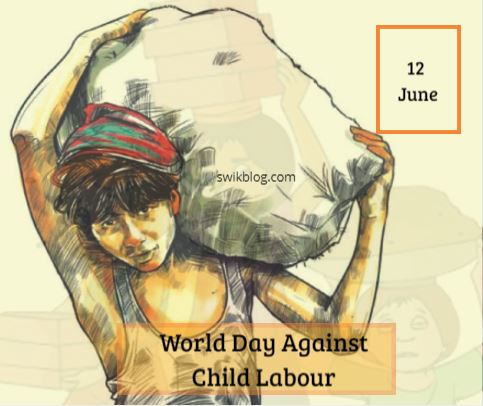
The World Day Against Child Labour is an awareness event initiated by International Labour Organization in 2002 with the intention to raise awareness and advocacy for child labor. Every year on 12 June, the World Day Against Child Labor aims to foster the international movement against child labour, in any of its forms. According to the United Nations, this day brings organizations, government, employees and workers of the civil society and millions of people from all around the world together to highlight the situation of child workers and what can be done to help them.
To illustrate the plight of these children, the International Labor Organization (ILO) initiated the first World Day against Child Labour in 2002, to highlight the problems of child labor. The day will serve as a spark for the global anti-child labor movement, which represents a large number of ratifications to the ILO Convention No. 182 on the worst forms of child labour and to the ILO Convention No. 138 on the minimum age for work.
Throughout the world, millions of boys and girls are working to deprive their rights of adequate schooling, health, leisure, and basic freedom. About half of these children are subjected to the worst forms of child labor, like living in unsafe conditions, slavery, and other types of forced employment, illicit activities including trafficking in drugs and prostitution, and involvement in armed conflict.
Theme of World Day Against Child Labour 2023
This year the theme of World Day against Child Labour 2023 is -‘Social Justice for All. End Child Labour!’
As a result, we see the 2023 World Day Against Child Labor as an opportunity for all of us who are dedicated for ending child labor to show what can be done if power and determination are combined, and to create momentum for efforts to be accelerated in a situation of great urgency.
Renewed efforts on a global scale to advance social justice, particularly through the proposed Global Coalition for Social Justice, which will place a strong emphasis on ending child labor;
the effective implementation of the Durban Call to Action; and the universal ratification of ILO Convention No. 138 on Minimum Age, which, since combined with ILO Convention No. 182 on Worst Forms of Child Labor achieved in 2020, would give all children legal protection against all forms of child labor.
This year the World Day Against Child Labour will be conducted as a virtual campaign and being jointly organized with The International Partnership for Cooperation on Child Labour in Agriculture ((IPCCLA) and the Global March Against Child Labour.
What is Child Labour?
Not all the work done by the children is listed in child labour. Either it takes children away from education or demands that they assume the dual burden of education and work. Child labor is a type of children in employment and it should be eliminated
Facts about Child Labour
- Among all the regions, Africa ranks the highest percentage in child labour it’s about one fifth and the total number of children working — 72 million.
- Asia and the Pacific rank second-highest — 7 percent of all children and 62 million in absolute terms are in child labour in this region.
- The regions of Africa and Asia and the Pacific together account for nearly nine out of every ten children worldwide in child labour.
- Nearly half (48 percent) of child labour victims were aged 5-11; 28% were aged 12-14 and 24% were aged 15-17.
- About 71% of the child labour is mainly concentrated to agriculture which includes fishing, forestry, animal husbandry, and aquaculture-17% of service and 12% of industry work and mining in particular.
Swikriti Dandotia











